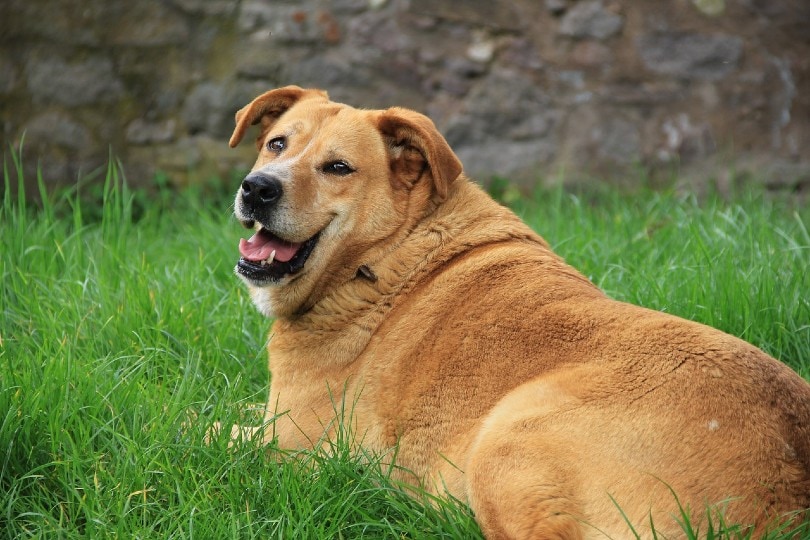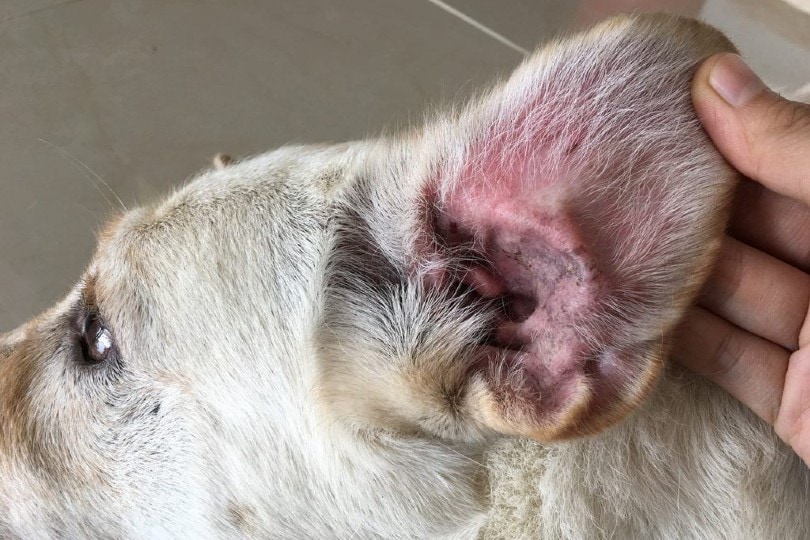
Just like humans, dogs have a thyroid gland that releases hormones to control metabolic rate. When the thyroid’s production of these hormones is impaired and secretion reduces, it causes a drop in the metabolic rate. This condition is known as hypothyroidism, and it affects many species of animal. It’s the opposite of hyperthyroidism, in which excessive levels of hormones are secreted and cause the metabolism to skyrocket, leading to weight loss, increase in anxiety, and more.

What Causes Hypothyroidism?
In the vast majority of hypothyroidism cases, the condition seems to stem from the destruction of the thyroid gland. Most of the time, either lymphocytic thyroiditis or idiopathic atrophy of the thyroid gland are the reasons for this.1 Lymphocytic thyroiditis is the more common culprit of the two, and it’s believed to be an immune-mediated disease. Essentially, this means that the immune system has wrongly identified the thyroid as a foreign body and has begun attacking it. Idiopathic atrophy of the thyroid gland is when the tissue of the gland degenerates, being replaced with fat tissue instead.

Signs of Hypothyroidism in Dogs
When hypothyroidism starts to set in and your dog’s metabolism drops, several signs are visible. Some of these signs are experienced almost universally by dogs that suffer from hypothyroidism, while other signs are much rarer and are considered to be less common, though they do occur with enough frequency to warrant listing.
Common Signs of Hypothyroidism

Less Common Signs of Hypothyroidism
Diagnosing Hypothyroidism in Dogs
You’ll need to schedule a vet visit for a proper diagnosis of hypothyroidism. Your vet will most likely perform a total thyroxine level test known as TT4, often combined with a TSH or thyroid-stimulating hormone produced by the pituitary. It measures the concentrations of thyroxine, the main thyroid hormone, and the TSH in the blood. If thyroxine levels are low, while TSH is high, and other clinical signs are present, then the vet may continue testing with a free T4 by equilibrium dialysis test or a panel test that measures concentrations of several thyroxin forms.
Should this second test also come back showing your dog has decreased levels of thyroxine, then a positive diagnosis of hypothyroidism has been made. On the other hand, if your dog showed low levels on the first test but not the second, then they may not have hypothyroidism, and additional testing could be administered to determine the cause of your dog’s signs. Your vet may also recommend repeating testing in a few weeks or months to see if the values become more indicative of hypothyroidism.

How Is Hypothyroidism Treated in Dogs?
Unfortunately, hypothyroidism cannot be cured in dogs, though it can be successfully managed with proper treatment, which will be ongoing for the remainder of your dog’s life. Treatment involves daily dosing of an oral thyroid replacement hormone that should allow your dog’s metabolism to function normally. Dosing starts at a standard level based on your dog’s weight.
A few weeks or one month into treatment, a blood sample will be used to determine whether the medication is returning hormone levels to where they should be, allowing the vet to adjust the dosage as needed. Over time, your dog’s body might change, which will necessitate another adjustment to the dosage, so thyroid hormone levels are generally tested every 3 to 6 months to ensure that hypothyroidism management is still going as planned.

Conclusion
If undiagnosed and untreated, hypothyroidism can make your dog’s life miserable and drastically reduce their quality of life. Thankfully, this is a manageable condition, even though it’s incurable. With daily medication, your dog can live a long, healthy life free of hypothyroidism’s effects. If you believe your dog is exhibiting signs of reduced metabolism, take them to the vet for screening and proper diagnosis so you can begin administering medication and return your dog’s quality of life to normal levels.
See also:
Featured Image: EugeneEdge, Shutterstock







